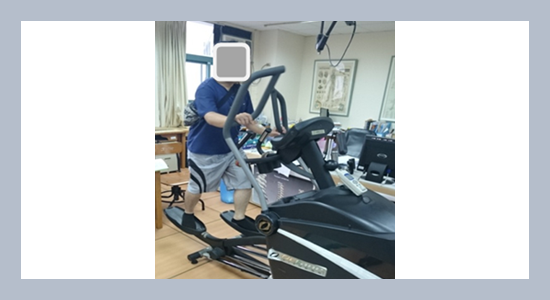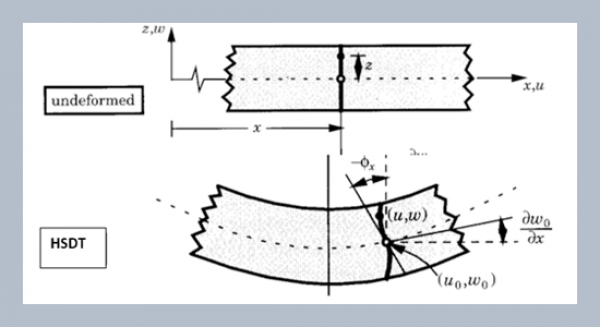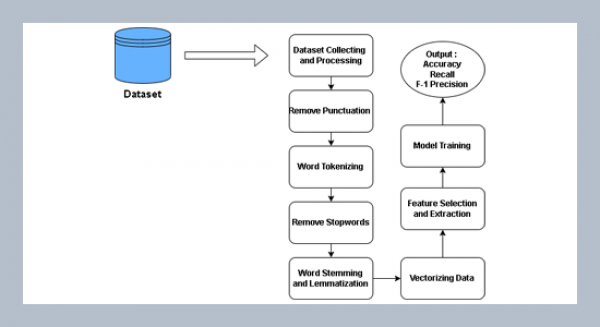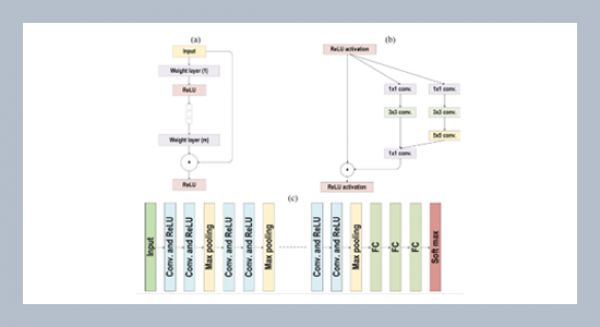REFERENCES
- Achten, J., Jeukendrup, A.E. 2003. Heart rate monitoring: applications and limitations, Sports Medicine, 33, 517–538.
- Adisusilo, A.K., Soebandhi, S. 2021. A review of immersivity in serious game with the purpose of learning media. International Journal of Applied Science and Engineering, 18, 2021229.
- Ahmad, Z., Khan, N. 2022. A survey on physiological signal-based emotion recognition. Bioengineering, 9, 688.
- Alele, F., Malau-Aduli, B., Malau-Aduli, A., Crowe, M. 2019. Systematic review of gender differences in the epidemiology and risk factors of exertional heat illness and heat tolerance in the armed forces, BMJ Open, 10, e031825.
- Alnajjar, F., Ozaki, K.I., Itkonen, M., Yamasaki, H., Tanimoto, M. Ueda, I., Masaki, K., Tournier, M., Nagai, C., Garcia, A.C., Ohno, K., Osawa, A., Kondo, I., Shimoda, S. 2020. Self-support biofeedback training for recovery from motor impairment after stroke, IEEE Access, 8, 72138–72157.
- Altaf, M., Altaf, K.F., Iftikhar, A., Goha, S., Yusra 2013. Workload and health problems in medical students, International Journal of Endorsing Health Science Research, 1, 69–72.
- Avram, R., Tison, G.H., Aschbacher, K., Kuhar, P., Vittinghoff, E., Butzner, M., Runge, R., Wu, N., Pletcher, M.J., Marcus, G.M., Olgin, J. 2019. Real-world heart rate norms in the Health eHeart study, NPJ Digital Medicine, 2, 1–10.
- Arney, B.E., Glover, R., Fusco, A., Cortis, C., de Koning, J.J., Erp, T.V., Jaime, S., Mikat, R. P., Porcari, J.P., Foster, C. 2019. Comparison of RPE (rating of perceived exertion) scales for session RPE, International Journal of Sports Physiology and Performance, 14, 994–996.
- Balducci, C., Alessandri, G., Zaniboni, G.S., Avanzi, L., Borgogni, L., Fraccaroli, F. 2021. The impact of workaholism on day-level workload and emotional exhaustion, and on longer-term job performance, Work & Stress, 35, 6–26.
- Bishop, B., Gu, D.L, Clapp, A. 2000. Climate under impermeable protective clothing, International Journal of Industrial Ergonomics, 25, 233–238.
- Borg, G. 1998. Borg's perceived exertion and pain scales, Champaign, IL: Human Kinetics.
- Brammer, J.C., van Peer, J.M., Michela, A, van Rooij, M.M.J.W., Oostenveld, R., Klumpers, F., Dorrestijn, W., Granic, I., Roelofs, K. 2021. Breathing biofeedback for police officers in a stressful virtual environment: challenges and opportunities, Frontiers in Psychology, 12, 586553.
- Callejas-Cuervo, M., Martínez-Tejada, L.A., Alarcón-Aldana, A.C. 2017. Emotion recognition techniques using physiological signals and video games–Systematic review, Revista Facultad de Ingeniería, 26, 19–28.
- CADTH 2007. Measuring temperature with infrared tympanic thermometers versus oral, axillary and rectal thermometers for proper patient management, Canada’s drug and health technology agency, CA.
- CDC 2021. Target Heart Rate and Estimated Maximum Heart Rate, U.S. Centers for Disease Control and Prevention. Retrieved 2021-06-26 from https://www.cdc.gov/physicalactivity/basics/measuring/heartrate.htm
- CDC 2022. Perceived Exertion (Borg Rating of Perceived Exertion Scale), U.S. Centers for Disease Control and Prevention. Retrieved 2022-10-29 from https://www.cdc.gov/physicalactivity/basics/measuring/exertion.htm
- Cuddy, J.S., Buller, M., Hailes, W.S., Ruby, B.C. 2013. Skin temperature and heart rate can be used to estimate physiological strain during exercise in the heat in a cohort of fit and unfit males, Military Medicine, 178, e841-847.
- Dadashi, N., Lawson, G., Marshall, M., Stokes, G. 2022. Cognitive and metabolic workload assessment techniques: A review in automotive manufacturing context. Human Factors and Ergonomics in Manufacturing & Service Industries, 32, 20–34.
- Das, S., Puthankattil, S.D. 2022. Wireless electroencephalogram monitoring system for deciphering neurological disorders using brain connectivity patterns. Expert Systems.
- DiDomenicoa, A., Nussbaum, M.A. 2008. Interactive effects of physical and mental workload on subjective workload assessment, International Journal of Industrial Ergonomics, 38, 977–983.
- Fishbein, D., Nambiar, S., McKenzie, K., Mayorga, M., Miller, K., Tran, K., Schubel, L., Agor, J., Kim, T., Capan, M. 2020. Objective measures of workload in healthcare: a narrative review, International Journal of Health Care Quality Assurance, 33, 1–17.
- Frank, D.L., Khorshid, L., Kiffer, J.F., Moravec, C.S., McKee, M.G. 2010. Biofeedback in medicine: Who, When, Why and how? Mental Health in Family Medicine, 7, 85–91.
- Geneva, I.I., Cuzzo, B., Fazili, T., Javaid, W. 2019. Normal body temperature: a systematic review, Open Forum Infectious Diseases, 6, ofz032.
- Goldstein, D.S., Ross, R.S., Brady, J.V. 1977. Biofeedback heart rate training during exercise, Biofeedback and Self-Regulation, 2, 107–125.
- Hallman, D.M., Birk Jørgensen, M., Holtermann, A. 2017. On the health paradox of occupational and leisure-time physical activity using objective measurements: effects on autonomic imbalance, PLoS One, 12, e0177042.
- Hancock, P.A., Matthews, G. 2019. Workload and performance: associations, insensitivities, and dissociations. Human Factors, 61, 374–392.
- Heard, J., Harriott, C.E., Adams, J.A. 2018. A survey of workload assessment algorithms, IEEE Transactions on Human-Machine Systems, 48, 434–451.
- Huang, X., Liu, Y., Zhou, J., Nejad, S.K., Wong, T.H., Huang, Y., Li, H., Yiu, C.K., Park, W., Li, J., Su, J., Zhao, L., Yao, K., Wu, M., Gao, Z., Li, D., Li, J., Shi, R., Yu, X. 2022. Garment embedded sweat-activated batteries in wearable electronics for continuous sweat monitoring. npj Flex Electron 6, 10.
- Jiménez Morgan, S., Molina Mora, J.A. 2017. Effect of heart rate variability biofeedback on sport performance, a systematic review, Applied Psychophysiology and Biofeedback, 42, 235–245.
- Jung, H.S., Jung, H.S. 2001. Establishment of overall workload assessment technique for various tasks and workplaces, International Journal of Industrial Ergonomics, 28, 341–353.
- Kawada, T., Ueda, H., Hayashi, M., Sakamoto, A., Uchida, K., Shirato, T., Etoh, R. 2010. Relationship among workload, health complaints, and depressive state of workers as revealed using a questionnaire survey, Work, 37, 333–339.
- Kim, J.H. 2017. The effects of training using EMG biofeedback on stroke patients’ upper extremity functions, Journal of Physical Therapy Science, 29, 1085–1088.
- Kokoroko, E., Sanda, M.A. 2019. Effect of workload on job stress of Ghanaian OPD nurses: The role of coworker support, Safety and Health at Work, 10, 341–346.
- Kondo, K., Noonan, K.M., Freeman, M., Ayers, C., Morasco, B.J., Kansagara, D. 2019. Efficacy of biofeedback for medical conditions: An evidence map, Journal of General Internal Medicine, 34, 2883–2893.
- Korshøj, M., Rasmussen, C.L., de Oliveira Sato, T., Holtermann, A., Hallman, D. 2021. Heart rate during work and heart rate variability during the following night: a day-by-day investigation on the physical activity paradox among blue-collar workers, Scandinavian Journal of Work, Environment & Health, 47, 387–394.
- Lumingu, H.M.M., Dessureault, P. 2009, Physiological responses to heat strain: A study on personal monitoring for young workers, Journal of Thermal Biology, 34, 299–305.
- Marcel-Millet, P., Gimenez, P., Groslambert, A., Ravier, G., Grospretre, S. 2021. The type of visual biofeedback influences maximal handgrip strength and activation strategies, European Journal of Applied Physiology, 121, 1607–1616.
- McIntire, L.K., McKinley, R.A., Goodyear, C., McIntire, J.P. 2014. Detection of vigilance performance using eye blinks, Applied Ergonomics, 45, 354–362.
- Mehta, R.K., Agnew, M.J. 2015, Subjective evaluation of physical and mental workload interactions across different muscle groups, Journal of Occupational and Environmental Hygiene, 12, 62–68.
- Mitratza, M., Goodale, B.M., Shagadatova, A., Kovacevic, V., van de Wijgert, J., Brakenhoff, T.B., Dobson, R., Franks, B., Veen, D., Folarin, A.A., Stolk, P., Grobbee, D.E., Cronin, M., Downward, G.S. 2022. The performance of wearable sensors in the detection of SARS-CoV-2 infection: a systematic review, The Lancet Digital Health, 4, e370-e383.
- Murillo Lorente, V., Álvarez Medina, J., Manomelles Marqueta, P. 2016. Control of training loads through perceived exertion. Prediction of heart rate (Control de las cargas de entrenamiento a través de la percepción subjetiva. Predicción de la frecuencia cardíaca), Retos, 30, 82–86.
- NIOSH 2016. NIOSH criteria for a recommended standard: occupational exposure to heat and hot environments. By Jacklitsch B, Williams WJ, Musolin K, Coca A, Kim J-H, Turner N. Cincinnati, OH: U.S. Department of Health and Human Services, Centers for Disease Control and Prevention, National Institute for Occupational Safety and Health, DHHS (NIOSH) Publication 2016-106.
- Pagaduan, J.C., Chen, Y.S., Fell, J.W., Wu, S.S.X. 2020. Can heart rate variability biofeedback improve athletic performance? A Systematic Review, Journal of Human Kinetics, 73, 103–114.
- Portoghese, I., Galletta, M., Coppola, R.C., Finco, G., Campagna, M. 2014. Burnout and workload among health care workers: The moderating role of job control, Safety and Health at Work, 5, 152–157.
- Prato, C.A., Yucha, C.B. 2013. Biofeedback-assisted relaxation training to decrease test anxiety in nursing students, Nursing Education Perspectives, 34, 76–81.
- Restuputri, D.P., Pangesti, A.K., Garside, A.K. 2019. The measurement of physical workload and mental workload level of medical personnel. Jurnal Teknik Industri, 20, 34–44.
- Rislund, C., Hemphälä, H., Hansson, G.Å., Balogh, I. 2013. Evaluation of three principles for forklift steering: Effects on physical workload, International Journal of Industrial Ergonomics 43, 249–256.
- Shariat, A., Cleland, J.A., Danaee, M., Alizadeh, R., Sangelaji, B., Kargarfard, M., Ansari, N.N., Sepehr, F. H., Tamrin, S. 2018. Borg CR-10 scale as a new approach to monitoring office exercise training. Work, 60, 549–554.
- Schwartz, M.S. 2010. A new improved universally accepted official definition of biofeedback: Where did it come from? Why? Who did it? Who is it for? What's next? Biofeedback, 38, 88–90.
- Schwartz, M.S., Andrasik, F. 2017. Biofeedback, fourth edition: a practitioner's guide, The Guilford Press, New York City, US.
- Stubberud, A., Omland, P.M., Tronvik, E., Olsen, A., Sand, T., Linde, M. 2018. Wireless surface electromyography and skin temperature sensors for biofeedback treatment of headache: Validation study with stationary control equipment, JMIR Biomedical Engineering, 3, e1.
- Sung, P.C., Hsu, P.S., Lou, S.Z., 2015. The effects of wearing encapsulating protective clothes, workload, and environment temperature on heat stress, in New Ergonomics Perspective, CRC Press/Balkema, The Netherlands, 149–154.
- Umer, W., Yu, Y., Antwi-Afari, M.F., Jue, L. Siddiqui, M.K., Li, H. 2022. Heart rate variability based physical exertion monitoring for manual material handling tasks, International Journal of Industrial Ergonomics, 89, 103301.
- Xiong, J., Lian, Z., Zhou, X., You, J., Lin, Y. 2016. Potential indicators for the effect of temperature steps on human health and thermal comfort, Energy and Buildings, 113, 87–98.
- Yang, H., Haldeman, S., Lu, M.L., Baker, D. 2016. Low back pain prevalence and related workplace psychosocial risk factors: a study using data from the 2010 National Health Interview Survey, Journal of Manipulative and Physiological Therapeutics, 39, 459–472.
- Yu, B., Funk, M., Hu, J., Wang, Q., Feijs, L. 2018. Biofeedback for Everyday Stress Management: A Systematic Review. Front. ICT, 5, 23.
- Yürür, S. and Sarikaya, M. 2012. The effects of workload, role ambiguity, and social support on burnout among social workers in turkey, Journal of Administration in Social Work, 36, 457–478.
- Weiner, J.S. 1982, The measurement of human workload, Ergonomics, 25, 953–965.
- Zamunér, A.R., Moreno, M.A., Camargo, T.M., Graetz, J.P., Rebelo, A.C., Tamburús, N.Y., da Silva, E. 2011. Assessment of subjective perceived exertion at the anaerobic threshold with the Borg CR-10 scale. Journal of Sports Science & Medicine, 10, 130–136.
- Zoer, I., Ruitenburg, M.M., Botje, D., Frings-Dresen, M.H., Sluiter, J.K. 2011. The associations between psychosocial workload and mental health complaints in different age groups, Ergonomics, 54, 943–952.















